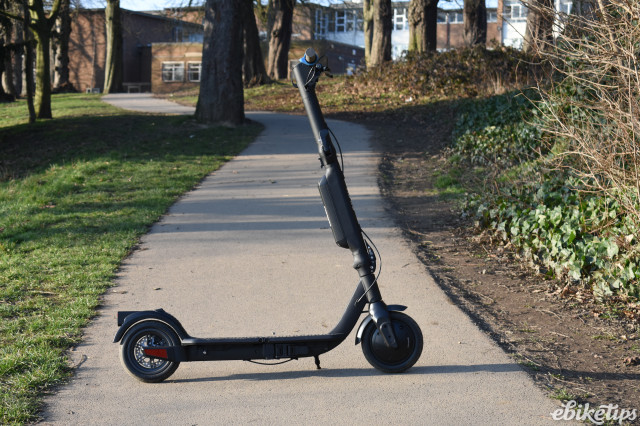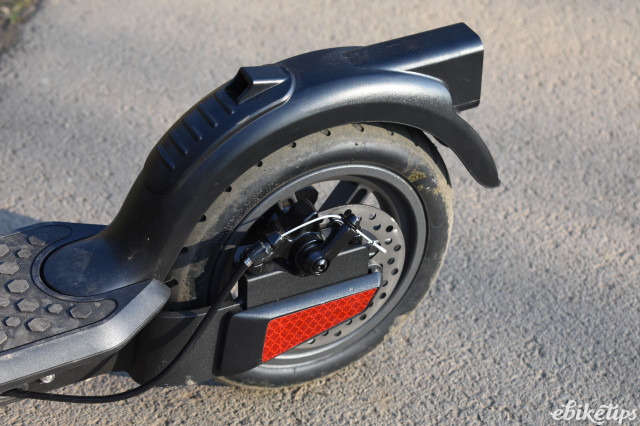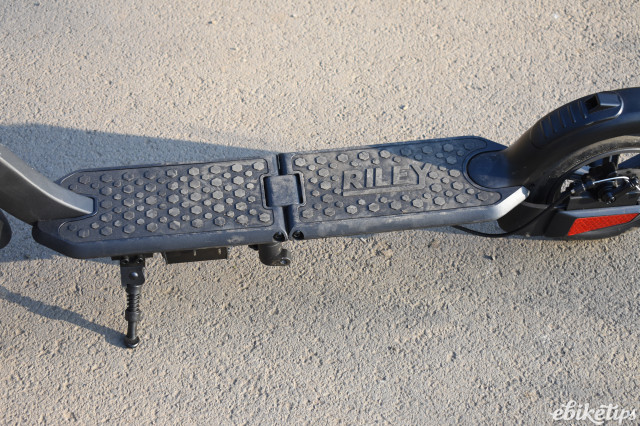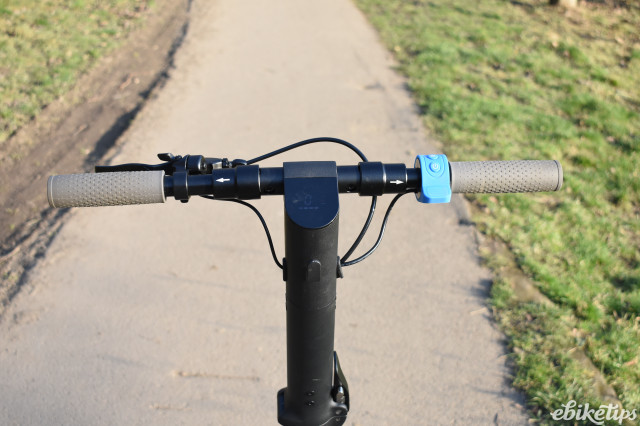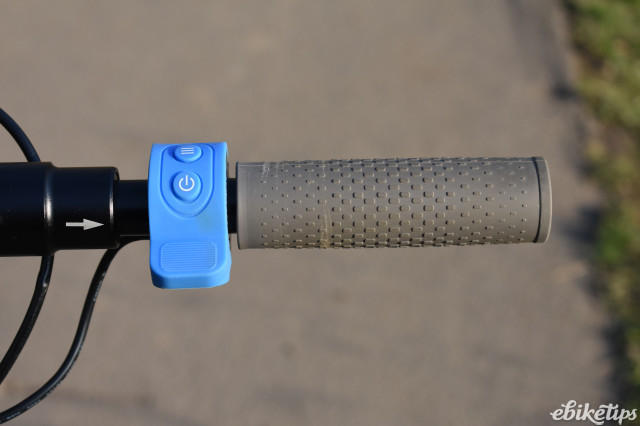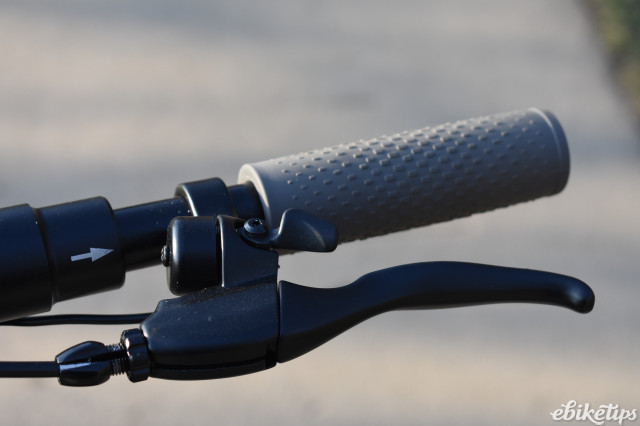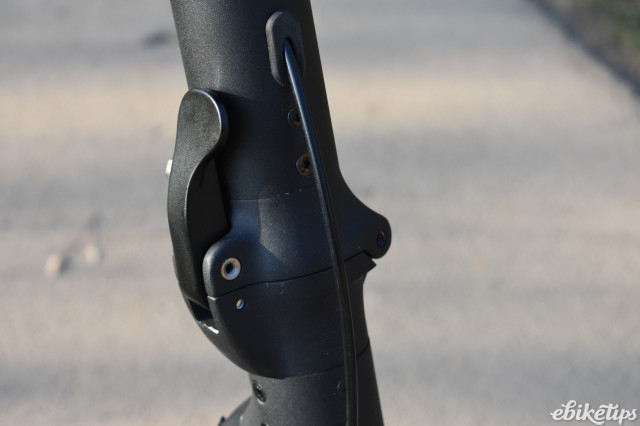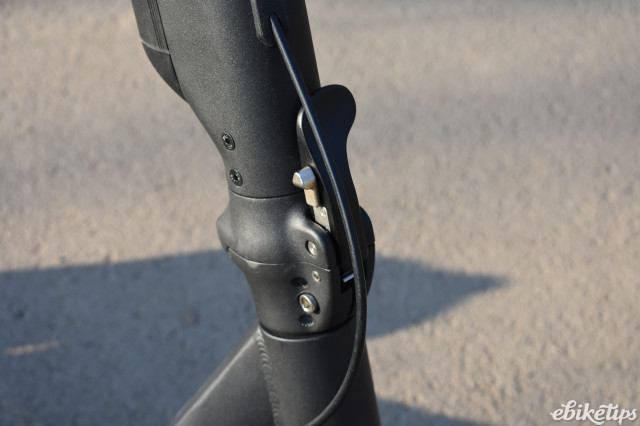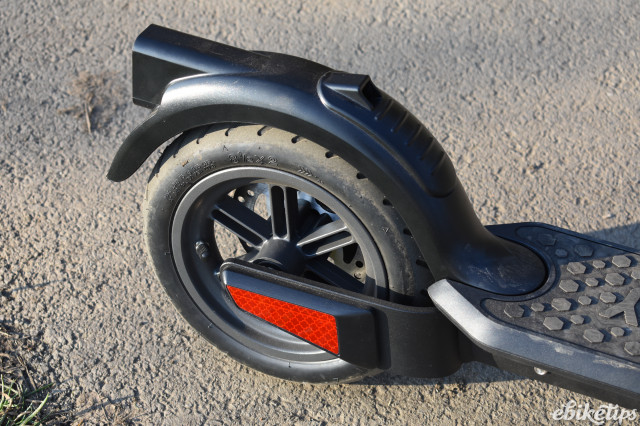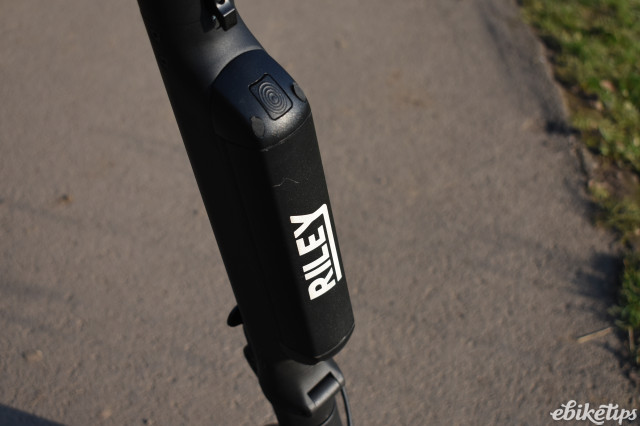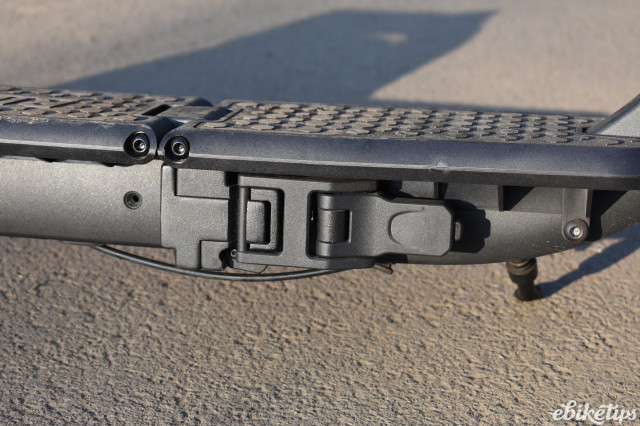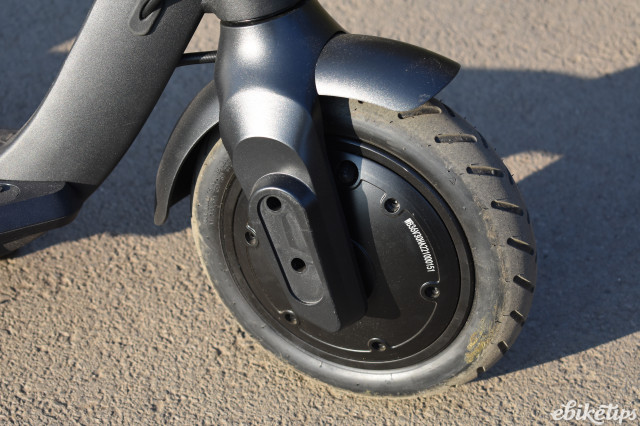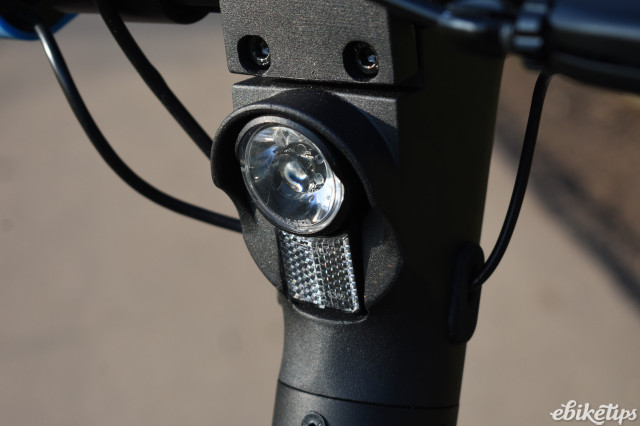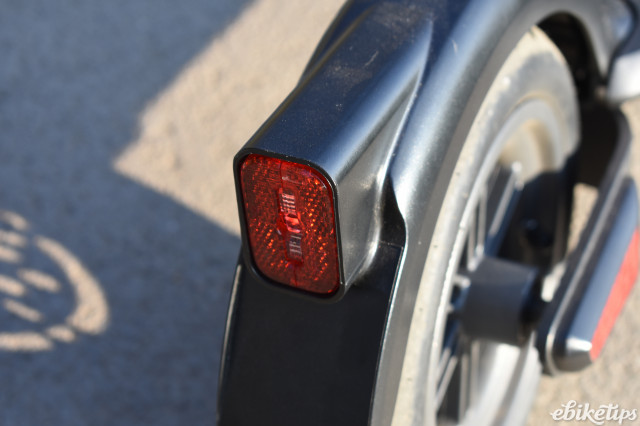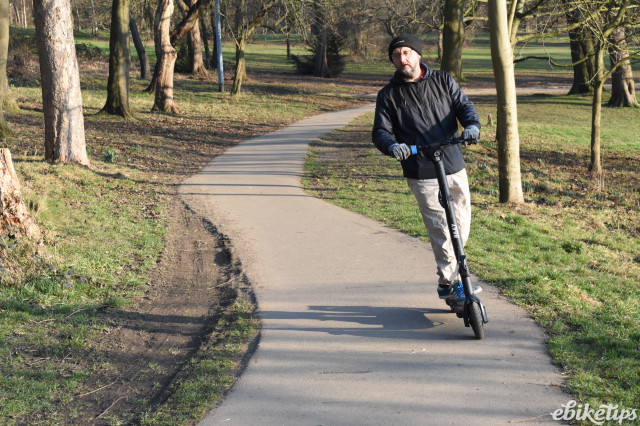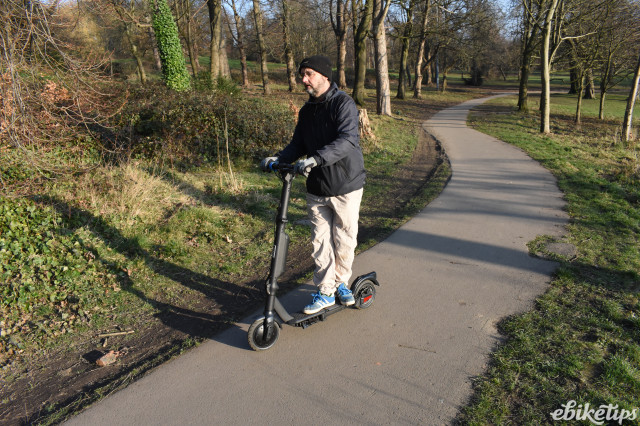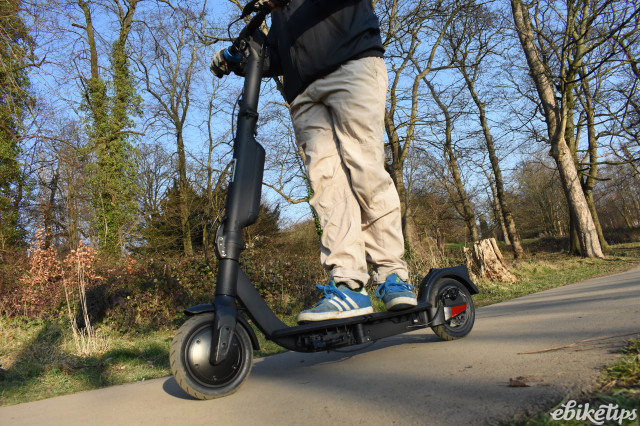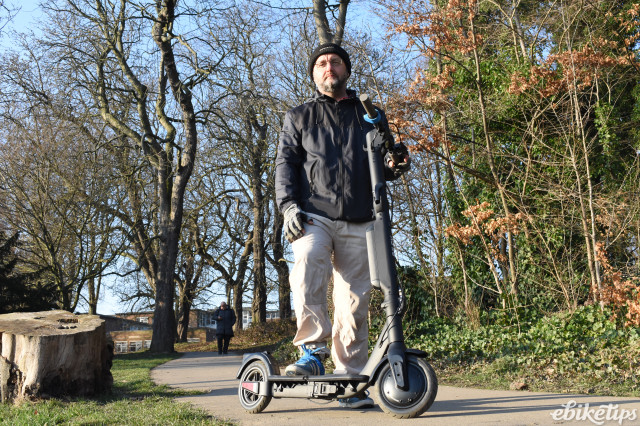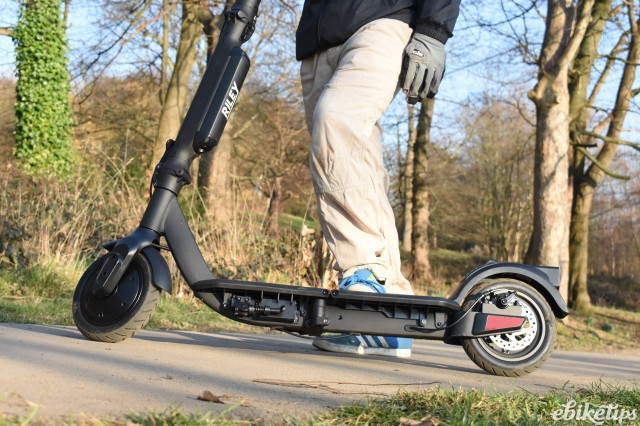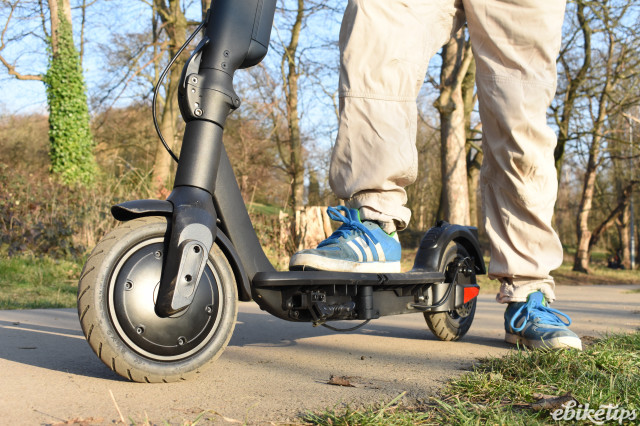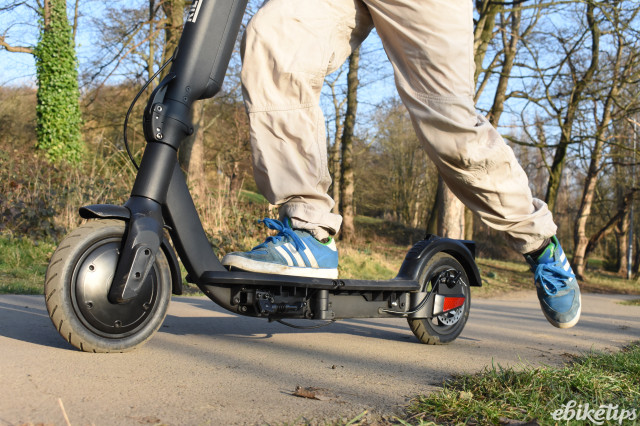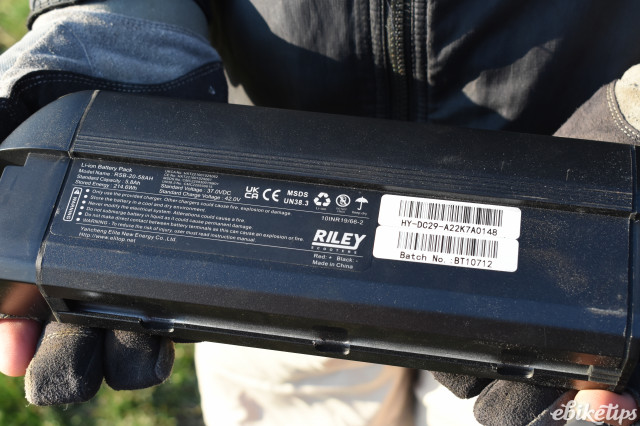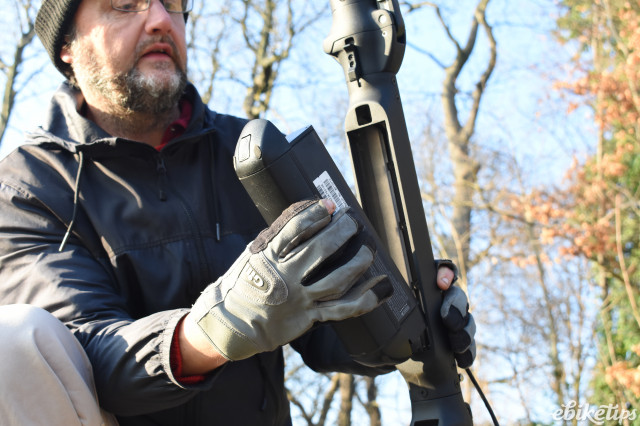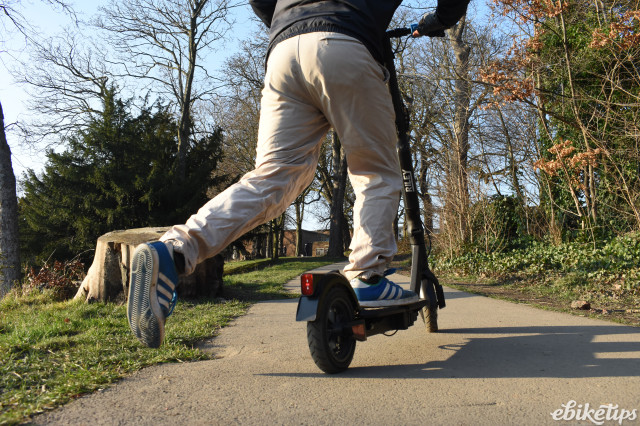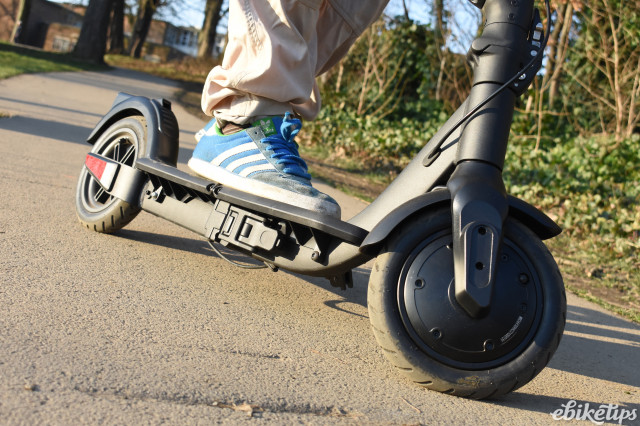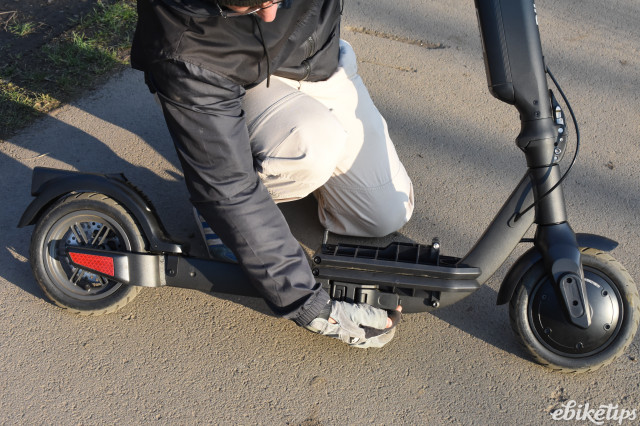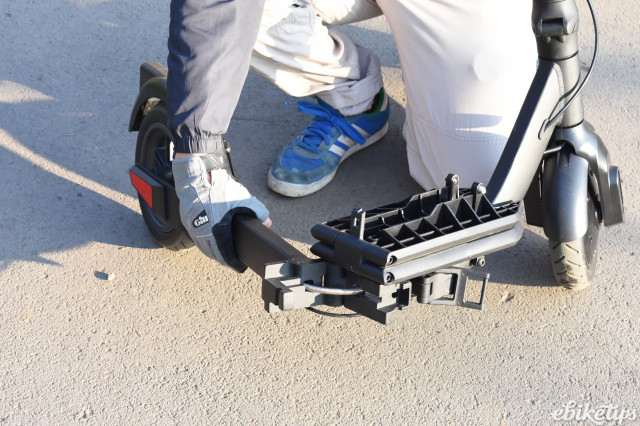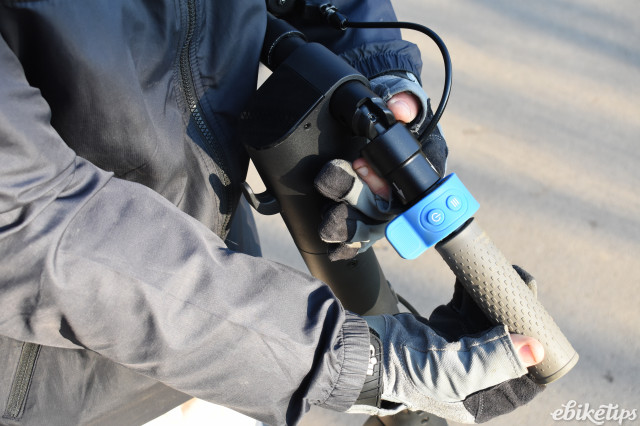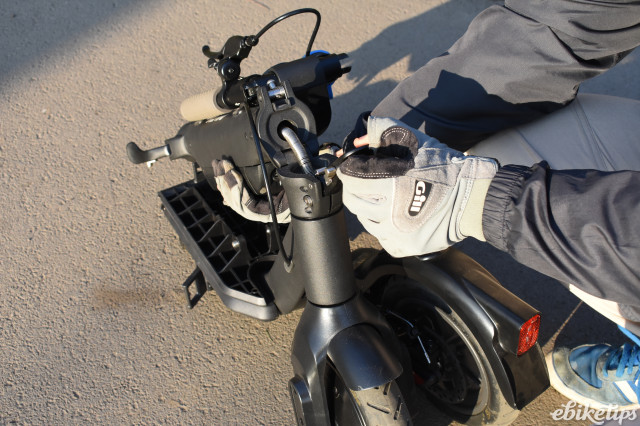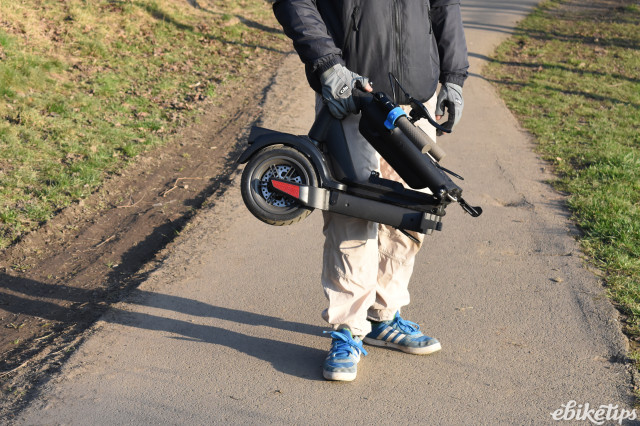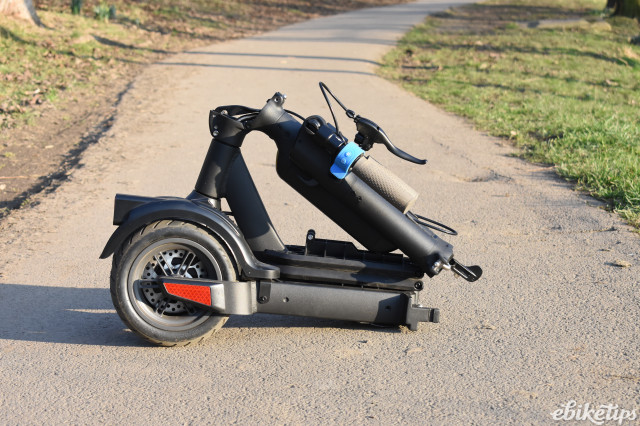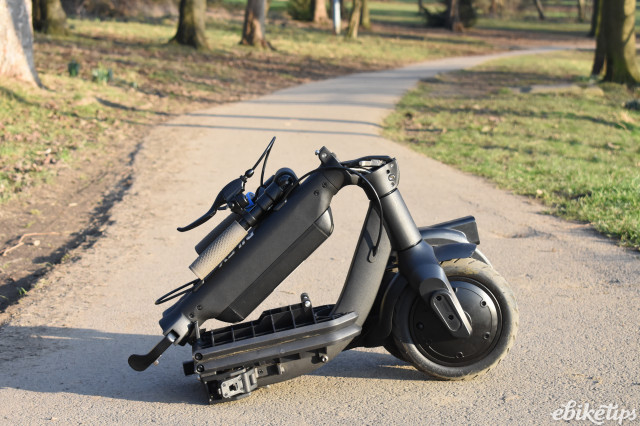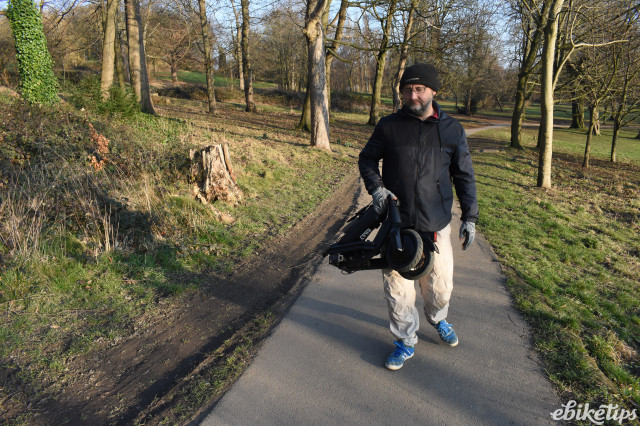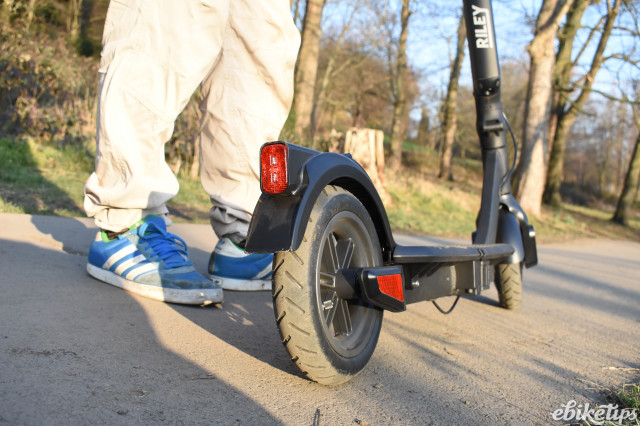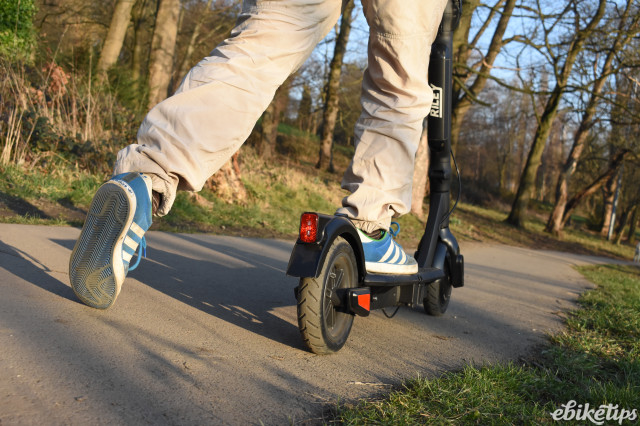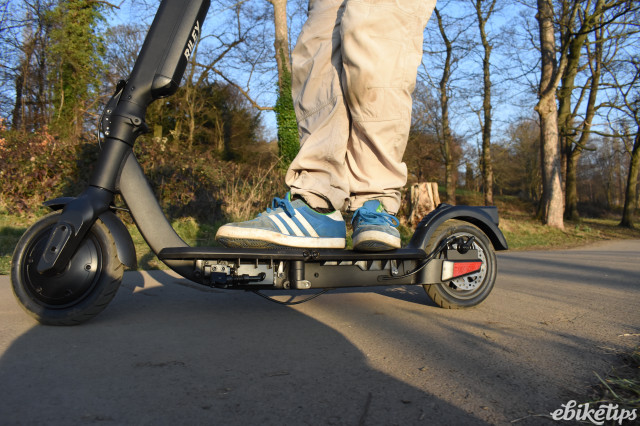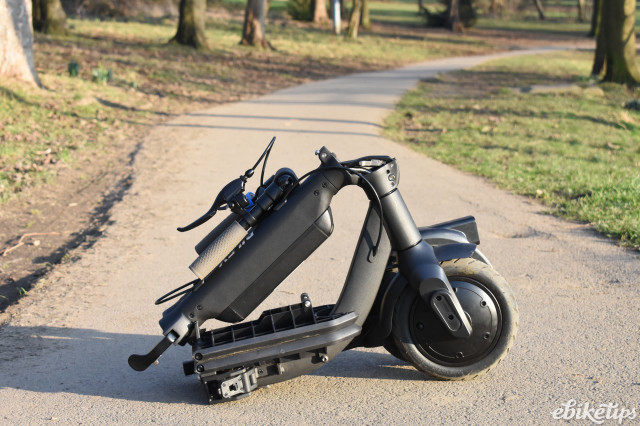Riley RS3 E-scooter
Overview
- Highly effective full fold
- Removable battery
- Good front light
- Quite heavy
- Small battery
- Not the most powerful hill climber
In a world of lookalike and perform-almost-alike electric scooters the Riley RS3 stands out because it folds. We don't just mean the handlepost folds, as with most other e-scooters. The RS3 has a folding deck and a double fold in the handlepost to make a much more compact and well-balanced package for carrying. That alone puts it in a league with only the Pure Air Advance for company and that fold is a big plus in our opinion. Most e-scooters get outperformed by e-bikes in terms of hill climbing and range, so anything that makes more of their smaller size and portability is the right way to go as far as we are concerned.
The other big plus of the RS3 is its small removable battery. At 214Wh you have to compromise on range somewhat but a removable battery is great if you need to store the e-scooter somewhere that does not have electricity. Removing the 1,550g battery also means you can have a 14.85kg folded package instead of a 16.4kg one (the battery itself will easily slip into a small backpack).
Build quality and fold
We are concentrating on this area as this is what stands out first when getting to grips with the RS3. There are several folding elements, so to keep everything rigid and stable-riding the hinges and latch style joints need to be very solidly engineered - and they are.
Folding down is as follows. The deck has a very simple fold back on itself as it requires no catches - it is kept in place by sprung ball bearings, so just requires a decent pull to fold it forwards. A beefy double pivot latch is then undone which allows the main body of the RS3 to fold in half with the two halves locking together with a reassuring click. (Folding e-bike makers take note - this locking feature is missing on many models!) Fold the handlebars using the push collars then two hinged joints on the handlepost complete the fold.
It's an impressively neat and quick operation that results in a folded package some 70 x 43 x 27.5 cm. Riley's claim of around 30 seconds for the fold operation seems about right. Despite the weight (all that hinge strength means it's certainly not the lightest e-scooter out there), it's a very well-balanced and compact folded package that a lot of people will be happy carrying down by their side and lifting to waist height. (Higher than that might well be a struggle though).
If e-scooters are ever legalised and allowed on trains this would make a great commuting machine for short distances at either end of a rail trip. (E-scooters are set to be legalised through the creation of a new low-speed, zero-emission vehicle category, although there is still no word on exactly when this will happen or what the exact requirements will be to qualify as such a vehicle.)
If you want you can just fold the bars in and the handlepost down in the manner of a traditional e-scooter fold or you can fold the deck in half only if that helps the RS3 stow away quickly. It's all very neat and practical.
The ride
The ride is pretty typical of many e-scooters. The power developed by these small-wheeled motors feels modest compared to just about any e-bike, but bear in mind it is doing all the work and the small wheels are not the most efficient (the RS3 has 8.5" wheels which is on the small side even for an e-scooter, being the smaller of the two standard sizes in common use, the other being 10 inches).
After some initial fettling to stop the rear cable disc brake rubbing, the braking worked well - the disc system itself being just one of three braking elements, the others being regenerative from the motor and also a friction brake from the rear mudguard.
Ebiketips has now developed its own range and hill climbing tests based on the much more modest terrain most e-scooters are designed for. Over these standard tests the RS3 returned a range of 7 miles on full power (there are three power levels - or rather speed levels) with a max flat speed of around 15mph. At around 6 miles the motor started to slow down whilst still retaining useful speed and modest hill climbing ability, whilst at 7 miles there was power left but it wasn't any use for going at anything other than slow walking speed on the flat. It's not particularly efficient, but may well be enough for many short-hop, city journeys where e-scooters come into their own. And having a removable battery (many e-scooters don't) means it's no big deal to carry an extra battery with you to double to range.
On the gentle hill climb test, the RS3 was marginally off the pace set by the similar specced (but non-fully-folding Eskuta KS450) - in other words, about par for the course for such a machine, though perhaps slightly underwhelming compared to other similar models we have tried. The RS3 is great for whizzing along the flat and on gentle hills but rather less use if the terrain gets at all steep.
The front light is very effective for night riding, though we would have liked to be able to point it further forward - it's not at all adjustable - whilst the rear light is highly visible from the back but could do with some side visibility. It doubles as a brake light, which is highly effective.
Competition
The Pure Air Advance has a full-folding version, the Flex - though at the time of writing this had not been released, with availability imminent. The folded size of the Flex is similar to the RS3, but it costs around £350 more (though you do get an extra 130Wh battery capacity).
If you don't need a fully folding e-scooter then there are plenty of cheaper models out there with similar or marginally better performance (based on the models ebiketips has tested thus far at least). If you are really on a budget check out our choice of the best e-scooters for less than £350.
